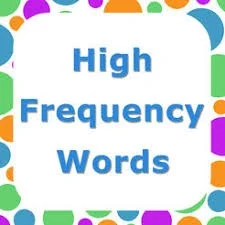Move from learning-to-read to reading-to-learn
We all want our children to be fluent and fast readers as early as possible. In the zest of helping the children with reading specifically phonics, at times high frequency words take a back seat. We must keep in mind that apart from phonics awareness, the mastery over high frequency words plays a very important role in children becoming proficient readers.
High frequency words are indeed a very important supplement to phonics instruction. The ability to recognize high frequency words by sight and not by sounding them our phonetically builds fluency and speed in reading.
Some tried and tested techniques will surely help the early readers in their reading fluency. These techniques are based on Orton-Gillingham method of multi-sensory teaching.
See & Say (S&S): As the name says, the sight word flash card is shown to the child and the child reads the word multiple times. It has to be repeated day after day till the child masters it. The procedure od See & Say is to keep the flash card at your shoulder height and just an arm’s length from the child. Each flash card has the sight word and an arrow going from left to right. Every time the sight word is read, the educator has to trace the arrow using index and middle finger.
Arm tapping: This technique adds spellings to make deeper cognitive impression. It stimulates kinesthetic learners and gives a tactile feedback. The procedure is to say the word tapping the left shoulder. Then slowly progress down the arm to the wrist saying the letters . Finally, say the word again sweeping the index and the middle finger along the arm. The child copies the same
Air writing: The physical act of writing in the air creates not only a cognitive impression but also helps cement the word in the child’s memory. The procedure is to hold the flash card at arm length from the child and at the child’s eye level. First, use two fingers to underline the word saying the word. Next, using two fingers, air write each letter as you call the letters. Finally, say the word one more time, again tracing the arrow to underline it. (Important to have the child hold their writing arm straight as they air write the word.)
Table Writing: This technique brings together all the elements of sight words teaching, that is, recognizing on sight, spelling it, and writing it. It is in fact a prelude to writing. This is similar to air writing, only has to be done on a horizontal surface for example, the surface of a table. The child is shown the flash card with the word. The child copies the letters of the word on the table using the two fingers of the writing hand, then underling to say the word. Finally, the flash card is removed and the child writes spelling the letters and underlining to say the word.
All these techniques help in getting the words into child’s long term memory. These are assured to make fluent readers. Once the child becomes proficient, the proficiency generates interest and we soon have an avid reader.
